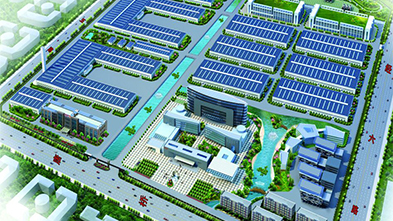Product
News
Contact
Company Name: Guotang Automobile Co., Ltd.
Contact: Chen Lei
Mobile: 15950340707
E-mail: 110942068@qq.com
Website: www.guotangauto.com/en
Address: No. 88, South Ring Road, High-tech Economic Zone, Jianhu County
New energy vehicle fork: pure electric bottleneck, hydrogen fuel debut
New energy vehicle fork: pure electric bottleneck, hydrogen fuel debut
Date of release:2019-05-17 Author:Guotang Automobile Co., Ltd. Click:
Following pure electric vehicles, hydrogen fuel cell vehicles have become the most frequently used term in the field of new energy vehicles. However, after the continuous spontaneous combustion accident of lithium batteries, people began to question the safety of pure electric vehicles. The vehicles with hydrogen fuel cells were also evaluated as “subsidized subsidies” by most people.
In fact, since the prevalence of new energy, the research on hydrogen fuel cell vehicles has been carried out. It is only because the pure electric wind is too strong, and the hydrogen fuel cell vehicle industry has not been exposed. Since the two sessions of the two sessions in 2019, Ms. Wang Fengying, the president of Great Wall Motors, proposed a proposal for the development of hydrogen fuel cell vehicles. The domestic low-key hydrogen fuel cell vehicles suddenly became high-profile.
This year's Shanghai International Auto Show has exhibited a number of hydrogen fuel cell vehicles. For example: Toyota's hydrogen fuel cell vehicle - Mirai, Hyundai's hydrogen fuel cell vehicle - NEXO, SAIC Chase's hydrogen fuel cell MPV model - G20FC and so on. In addition, domestic brands such as Hongqi Auto, Dongfeng Motor, Han Teng Auto, Zotye Auto, and Ai Chi Auto have also donated their own hydrogen fuel cell vehicles.
At the time of the bottleneck of pure electric vehicles, hydrogen fuel cell vehicles are ready to go, and there are indications that there must be a foothold for hydrogen fuel cell vehicles in the field of new energy vehicles.
Hydrogen fuel cell vehicle initial exhibition
As early as 1965, foreign scientists have designed hydrogen-powered cars, but the domestic start is relatively late and there is no wholehearted commitment. The China Automotive Engineering Society predicted that by 2030, the output value of China's hydrogen energy vehicle industry is expected to exceed the trillion yuan mark. The proposal to fully develop hydrogen fuel cells during the two sessions this year was mentioned by many representatives. For a long time, people who admire pure electric vehicles suddenly took the hydrogen fuel cell vehicle.
As we all know, the global prootion of new energy sources is mainly aimed at reducing the emission of automobile pollutants and reducing the dependence of automobiles on petroleum resources, which is conducive to environmental protection. Because the hydrogen fuel cell is completely burned and converted into water and carbon dioxide, the discharged matter is not a pollutant, and the hydrogen fuel cell has the advantages of high endurance, energy replenishment speed close to the fuel car, and the like, which fully meets the development conditions of the new energy vehicle, the foreign car The company has been dedicated to research for many years.
In addition, although from the current market situation, fuel cell vehicle technology lags far behind electric vehicle technology. However, foreign auto brands such as Toyota and Honda entered the fuel cell market early, forming a hydrogen energy vehicle supply chain from fuel cells to vehicle manufacturing, which has pointed out the way for the development of hydrogen energy vehicles in China. It is reported that Toyota Motor announced in 2015 that it will open the use of patents for fuel cell technology, a total of 5,680 items. Toyota's hydrogen fuel cell technology is available free of charge to automakers and component suppliers worldwide in the future.
Moreover, electric vehicles in various places have been distressed by subsidies or subsidies, but fuel cell vehicles have not been affected. It is reported that the hydrogen energy vehicle subsidy in 2018 determines the subsidy coefficient according to the ratio of rated power to the rated power of the drive motor. The maximum subsidy for bicycles for passenger cars, light buses and trucks, medium and large passenger cars and medium and heavy-duty trucks is 200,000 per vehicle, 30 Ten thousand vehicles, 500,000 vehicles, it is expected that subsidies will not decline before 2020.
According to the statistics of Auto-First: Guangdong clearly allocates 30% of provincial subsidy funds to support fuel cells; Wuhan subsidizes according to central 1:1; Shanghai, Hainan and Qinghai subsidize according to central 1:0.5; Chongqing according to country 1 : 0.4 subsidies; Henan subsidies according to the country 1:0.3, all parts of the country are interested in promoting the paving of vehicles for hydrogen energy fuel vehicles.
It is worth mentioning that the hydrogenation process of the hydrogen fuel cell vehicle is similar to that of the fuel vehicle, and it takes only 3-5 minutes to complete, and the endurance ability is stronger than that of the electric vehicle. Honda CLARITY can reach 589km under US EPA conditions, and Toyota Mirai can reach 502km. These conditions are more in line with consumer demand and habits.
In terms of global automotive development trends, although the development of pure electric vehicles is closer to industrialization than hydrogen fuel vehicles. However, because it is recognized that hydrogen fuel cell vehicles will be more competitive than pure electric vehicles after the system and technology are mature, major domestic auto companies will also reach out to the hydrogen fuel cell vehicle market.
Domestic and foreign car companies have a big gap in hydrogen fuel technology
In recent years, more than 40 vehicle companies and engine companies including Futian Automobile, SAIC Datong, FAW Hongqi, Zotye Automobile, Dongfeng Motor, Grove Automobile, Han Teng Motor, Ai Chi Automobile and Qingling Motors have actively placed hydrogen. Fuel car. We can look at the development of domestic hydrogen fuel vehicles from the representative development of SAIC hydrogen fuel vehicles...
SAIC is the largest listed automobile company in China's A-share market, and its automobile industry chain is relatively mature. The main vehicle companies include passenger car companies, SAIC Datong, SAIC Volkswagen, SAIC-GM, SAIC-GM-Wuling, etc., which is the first company in China to develop hydrogen fuel cell vehicles.
In the research and development of hydrogen fuel cell vehicles, SAIC Motor has been doing a lot. In 2008, SAIC and Tongji University jointly developed 20 fuel cell vehicles as public vehicles during the Beijing Olympic Games; after two years, they provided more than 40 fuel cell vehicles for the Shanghai World Expo as public vehicles; The Roewe 950 plug-in fuel cell vehicle was unveiled at the Shanghai Auto Show. In recent years, SAIC Chase has released a V80 hydrogen fuel cell version powered by a hydrogen fuel cell and mass production.
In terms of performance, SAIC is also thriving. SAIC Group released its 2018 financial report: In 2018, SAIC's total revenue reached 902.19 billion yuan, a year-on-year increase of 3.62%; of which, the net profit attributable to shareholders of listed companies was 36 billion yuan, compared with the increase of 34.4 billion yuan in 2017. It was 1.6 billion yuan, an increase of 4.65%.
There are still many traditional car companies in China that are similar to SAIC's hydrogen energy technology. However, compared with foreign car companies, there is still a big gap in the research and development of hydrogen fuel vehicles.
The only Roewe 950 hydrogen fuel cell passenger car launched in 2016 is compared with Toyota Mirai, the world's first mass-produced hydrogen fuel cell vehicle. The maximum power of the SAIC Roewe 950 is 55kW, which is much lower than the maximum power of Toyota Mirai's 114kW. At the same time, the cruising range of 400km is not as good as the 502km of Mirai.
In fact, Japan's well-known car flats Toyota, Honda, etc. have announced that fuel cell vehicles have been commercialized, and it is a global leader in the development and commercialization of hydrogen fuel cells and hydrogen fuel cell vehicles. According to the China Securities Journal, in 2017, the Ministry of Economy, Trade and Industry released the "Basic Strategy for Hydrogen Energy". In 2020, it has achieved a total of 40,000 vehicles. In 2025, it has achieved a total of 200,000 vehicles.
Not only in Japan, but in fact, many mainstream car companies around the world are very keen on the development of hydrogen fuel vehicles.
As early as 2012, Daimler-Benz, Volkswagen and the German government announced that they would jointly invest in a hydrogen fueling network throughout Germany. It is estimated that by 2020, Germany will invest 500,000 hydrogen fuels into the market. Battery car. At the same time, the United Kingdom, the Netherlands and other European countries to develop hydrogen fuel cell vehicles, the United Kingdom plans to reach 1.6 million hydrogen fuel cell vehicles by 2030, the goal of all major powers to fully promote hydrogen fuel vehicles is very clear.
The address of this article:http://www.guotangauto.com/en/news/447.html
Recently browse:
Related products:
Related news:
苏ICP备19031716号 Powered by Clouds platform Technical Support:Xiangyun Platform Yancheng Company





